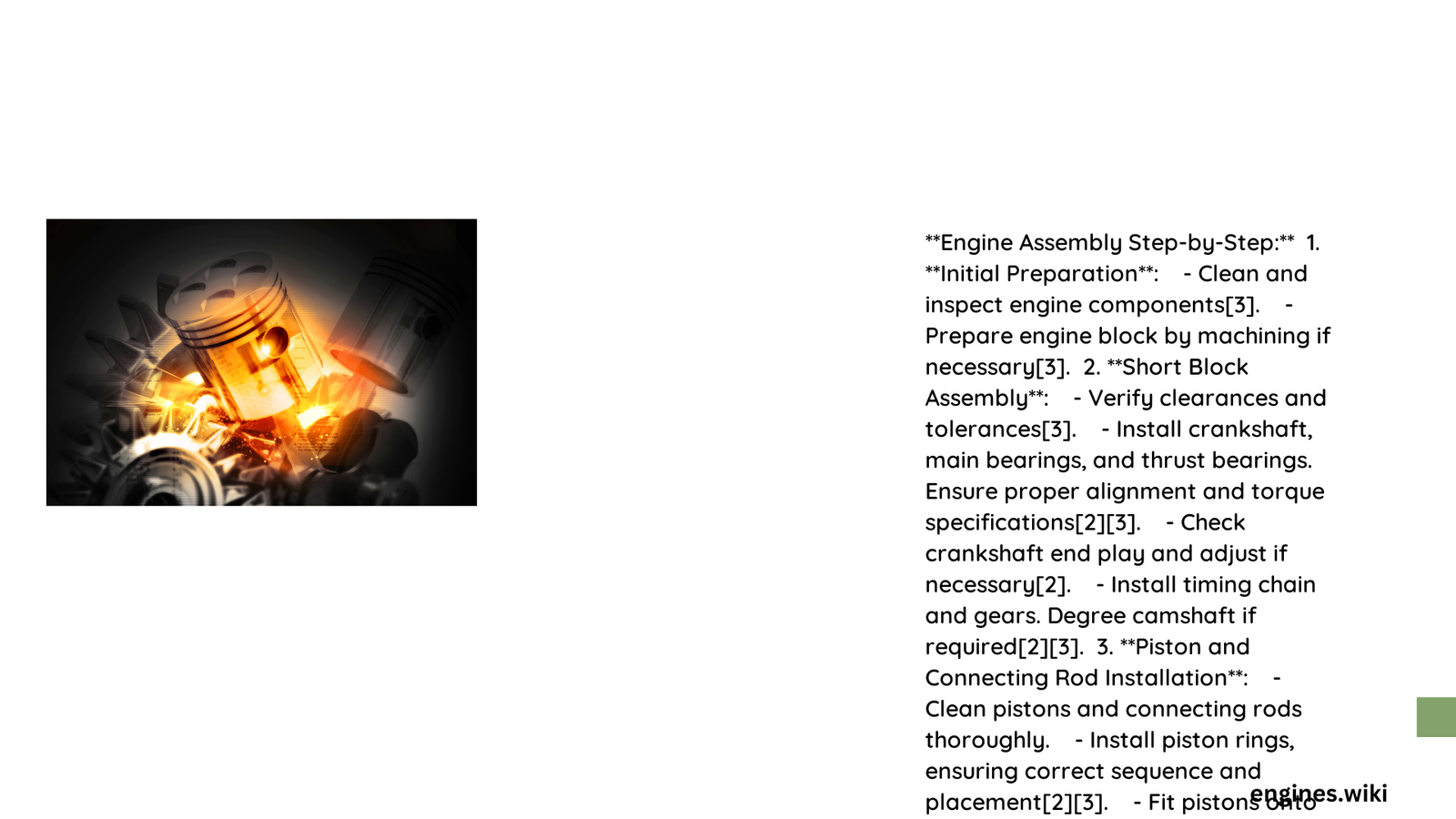Engine assembly is a precision-driven process requiring meticulous attention to detail, specialized tools, and comprehensive technical knowledge. Professionals must navigate complex mechanical interactions, ensuring each component fits perfectly and functions harmoniously within the engine’s intricate system. This guide provides an exhaustive walkthrough of engine assembly techniques, focusing on critical steps, torque specifications, and potential challenges encountered during the rebuilding process.
What Are the Preliminary Preparation Steps?
Inspection and Component Readiness
Before beginning engine assembly, technicians must conduct thorough inspections of all components. This involves:
- Comprehensive visual examination
- Dimensional verification
- Material integrity assessment
- Surface finish evaluation
Critical Machining Processes
- Block Preparation
- Bore alignment checking
- Surface decking
- Crack detection
- Alignment honing
How Do You Assemble the Short Block?

Precision Clearance Verification
Successful short block assembly demands precise measurements:
| Component | Required Clearance | Tolerance Range |
|---|---|---|
| Piston-to-Bore | 0.0015-0.0035 inches | ±0.0005 inches |
| Main Bearing | 0.001-0.003 inches | ±0.0002 inches |
| Crankshaft Thrust | 0.004-0.008 inches | ±0.001 inches |
Detailed Assembly Sequence
- Install connecting rod bearings
- Fit pistons onto connecting rods
- Install piston rings
- Position crankshaft
- Align connecting rod assemblies
What Tools Are Essential for Engine Assembly?
Recommended Professional Toolkit
- Precision torque wrench
- Engine hoist
- Dial bore gauge
- Micrometer set
- Piston ring compressor
- Valve spring compressor
- Plastigage measurement tools
How Do You Manage Cylinder Head Installation?
Preparation Techniques
- Thoroughly clean cylinder head surfaces
- Inspect valve guides and seats
- Replace valve seals
- Check valve spring tension
- Verify cam alignment
Torque Sequence Strategies
Cylinder head bolt torquing requires a specific pattern:
– Start from center bolts
– Progress outward systematically
– Apply torque in multiple stages
– Follow manufacturer’s precise specifications
What Are Common Challenges During Assembly?
Potential Pitfalls
- Improper bearing clearances
- Incorrect ring end gap
- Uneven head bolt torque
- Contamination during assembly
How Do You Perform Final Engine Startup?
Break-In Procedures
- Use assembly lubricant
- Prime oil system
- Disable fuel system initially
- Manually rotate crankshaft
- Check oil pressure
- Gradually introduce fuel and ignition
Pro Tips for Successful Engine Assembly
- Always use new gaskets
- Clean work environment
- Measure twice, assemble once
- Follow manufacturer specifications
- Use calibrated measurement tools
Time Investment
- Short block assembly: 3-4 hours
- Cylinder head preparation: 2-3 hours
- Complete assembly: 8-12 hours
Conclusion
Mastering engine assembly requires technical expertise, patience, and precision. Continuous learning and adherence to manufacturer guidelines ensure successful rebuilds.
